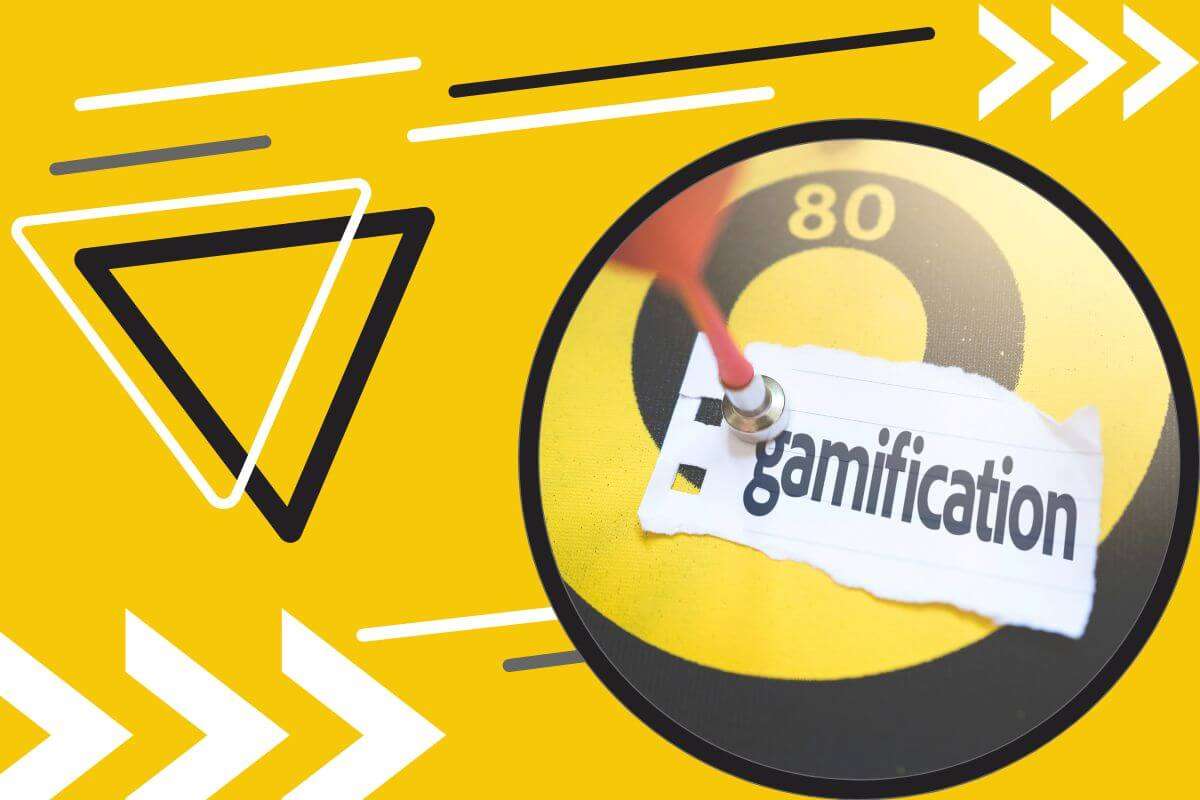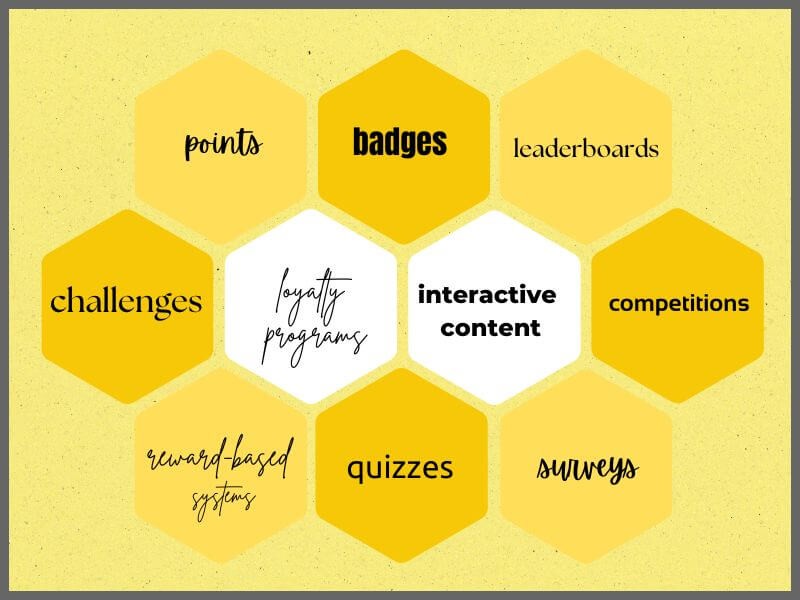
Gamification has lost its “title” of a trendy term that no one understands. Now we can say that it’s become a reliable method for brands. With gamification, it's possible to create immersive, interactive experiences that cultivate genuine engagement. Ready to find out all about it?
Gamification marketing, as its name says, involves the use of game elements—like points, rewards, and challenges—within marketing campaigns.
The goal is to intensify customer engagement.
Unlike the usual use of digital marketing, which relies on delivering a certain message to consumers, gamification invites users to participate actively.
By rewarding users with incentives or recognition, gamification strategies make audiences feel directly involved with your brand's story.
This fosters a deeper engagement and also a memorable and, often, shareable experience.
Gamification is all about blending game mechanics into non-game settings. All with the goal of creating a more engaging experience.
What is this gamification then?
Think of apps that reward users with points for regular exercise or brands that introduce interactive quizzes to keep users entertained and informed.
Gamification is powerful: it invites audiences to participate, increasing both interaction and retention rates.
When users are given clear goals, challenges, and incentives, they become more involved.
Like loyalty programs, where users collect points to earn rewards.
Each interaction serves as a step in the consumer's journey, moving them from passive observers to engaged ones.
Müller, for example, engages customers through its mobile app’s reward-based system, turning each purchase into an opportunity to collect points (turned into euros).

Gamification is effective because it taps into fundamental psychological triggers.
People are naturally motivated by rewards, progress, and a sense of achievement. By integrating these elements into your marketing, you create a lasting impact on your audience.
And yes, people love to play.
Human motivation is often driven by the desire to learn, achieve, and win. Gamification taps into these instincts. When users feel that they are making progress, even in small steps, they become more likely to continue.
This concept, known as the “progress principle,” suggests that even a small achievement can boost an individual's enthusiasm and commitment.
Gamified experiences also create a dopamine effect.
Dopamine, often associated with motivation, plays its role in satisfaction from gamified experiences. When users collect points or complete a challenge, their brain releases dopamine and a positive feeling (that will encourage them to return for more).
It's a loop, and it makes gamified stick with the audience, leading to higher engagement.

Successful gamification comes in various forms.
Here are some proven strategies for different audience motivations:
Points, badges, and leaderboards
These are all simple yet effective tools.
Awarding points and badges for completing certain actions taps into human competitive nature.
Leaderboards go a step further, allowing users to see their ranking relative to others, which can spark friendly competition.
For example, some fitness apps, like Nike Run Club, use leaderboards to encourage users to compete with friends and stay active.
Challenges and competitions
Challenges create excitement and drive engagement. Especially if there’s a prize.
For instance, you can launch a photo challenge where participants post pictures using your products to win rewards. This approach boosts brand awareness and, at the same time, builds a community around shared interests.
Interactive content—quizzes and surveys
Quizzes are interactive, engaging, and can be shared.
Many skincare brands often use quizzes to recommend products based on individual preferences, transforming a promotional tool into a personalised experience.
Surveys also work well, particularly when they offer some sort of reward upon completion.
Loyalty programs and reward-based systems
Loyalty programs have long been a form of gamification, where customers earn rewards for repeat business.
Sephora and Douglas, leading beauty retailers, have programs and cards where a customer collects points for purchases and can redeem them for exclusive perks.
By making marketing fun and rewarding, gamification builds stronger brand relationships, creating a loyal customer base that values the experience as much as the product.
Gamification encourages users to invest time and energy in your brand. The experience becomes personal, building a deeper, more emotional connection.
Several brands have successfully implemented gamification, including:

Not all gamification works, and you’ll need to steer clear of common pitfalls.
Don’t overdo it - if gamification feels forced, it risks losing credibility. Gamified elements should feel natural and add value to the user’s experience.
Avoiding one-size-fits-all - you must understand your audience.
A generic approach to gamification won’t engage everyone. Instead, tailor experiences to fit your specific audience, considering factors like age, preferences, and interests.
Focus on value – think beyond pure entertainment, to ensure effectiveness.
Gamification should enhance, not distract from, your brand’s message.

The evolution of technology is opening up new possibilities for gamification.
AI is enabling more personalised gamification, adjusting experiences in real-time based on user preferences. And you already know how personalised experiences create a more meaningful connection.
Augmented Reality (AR) and Virtual Reality (VR) provide immersive, hands-on experiences. IKEA has embraced AR for some time now to allow users to visualise products in their own spaces.
With advancements in technology, gamification will likely become even more embedded in everyday interactions with brands, delivering increasingly interactive experiences.
And a piece of advice: your goals should be attainable—provide small rewards and milestones along the way to help maintain motivation without overwhelming participants.
While fun is important, it shouldn’t overshadow the brand’s objectives. Successful gamification is all about balance and engagement with clear business goals, such as increased customer loyalty or higher sales.
Incorporating gamification into your marketing strategy isn’t just about adding fun elements—you have to create memorable connections that will keep audiences engaged and have them coming back.
Ready to take your brand’s engagement to the next level? Start exploring gamification strategies tailored to your audience.
Contact us today so we can give your brand a new life.